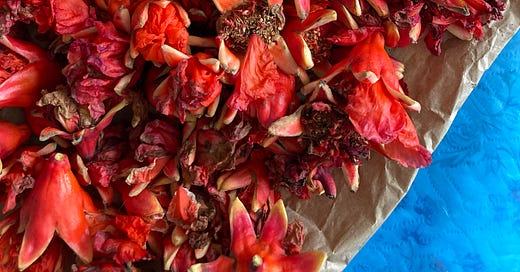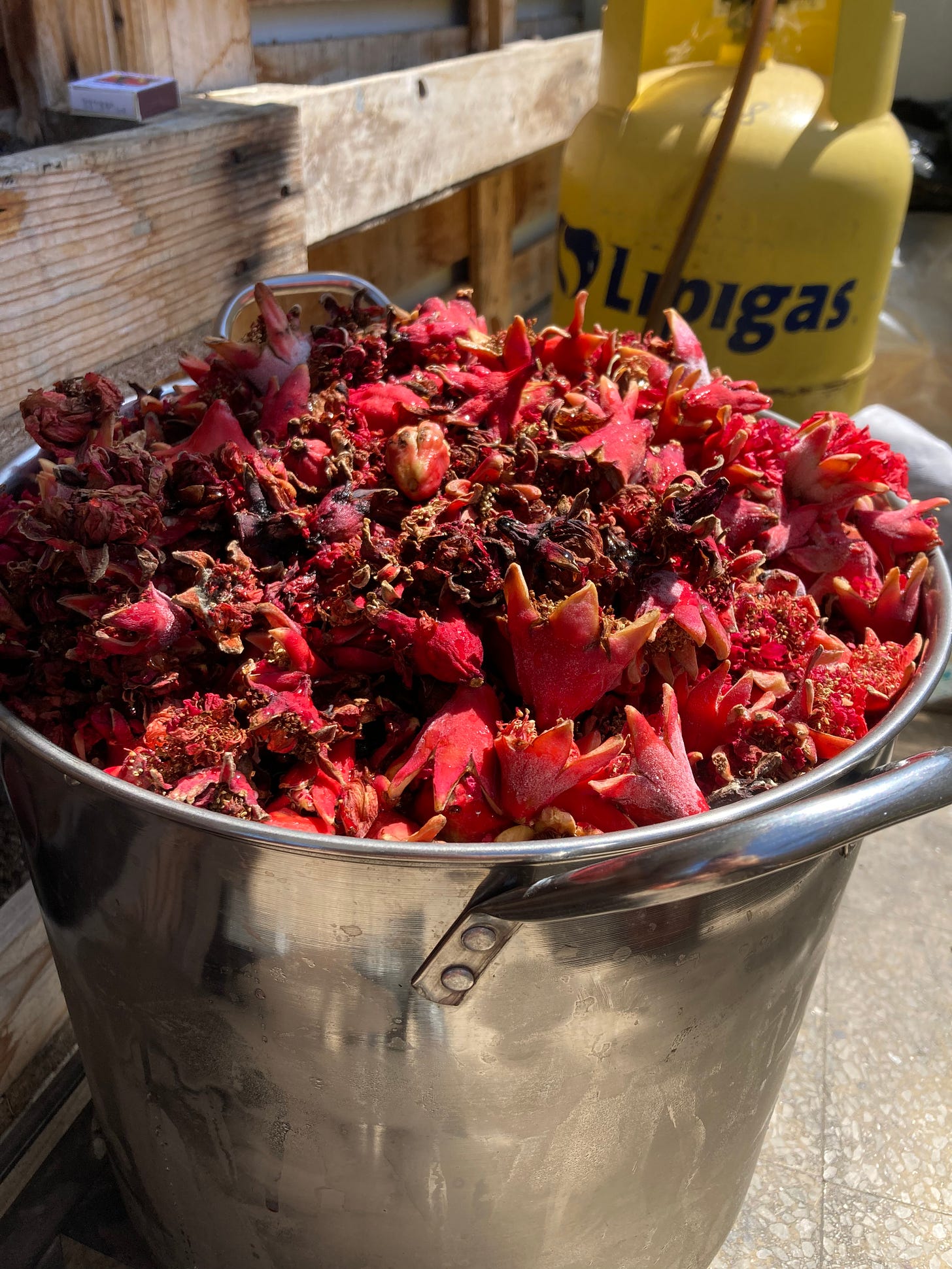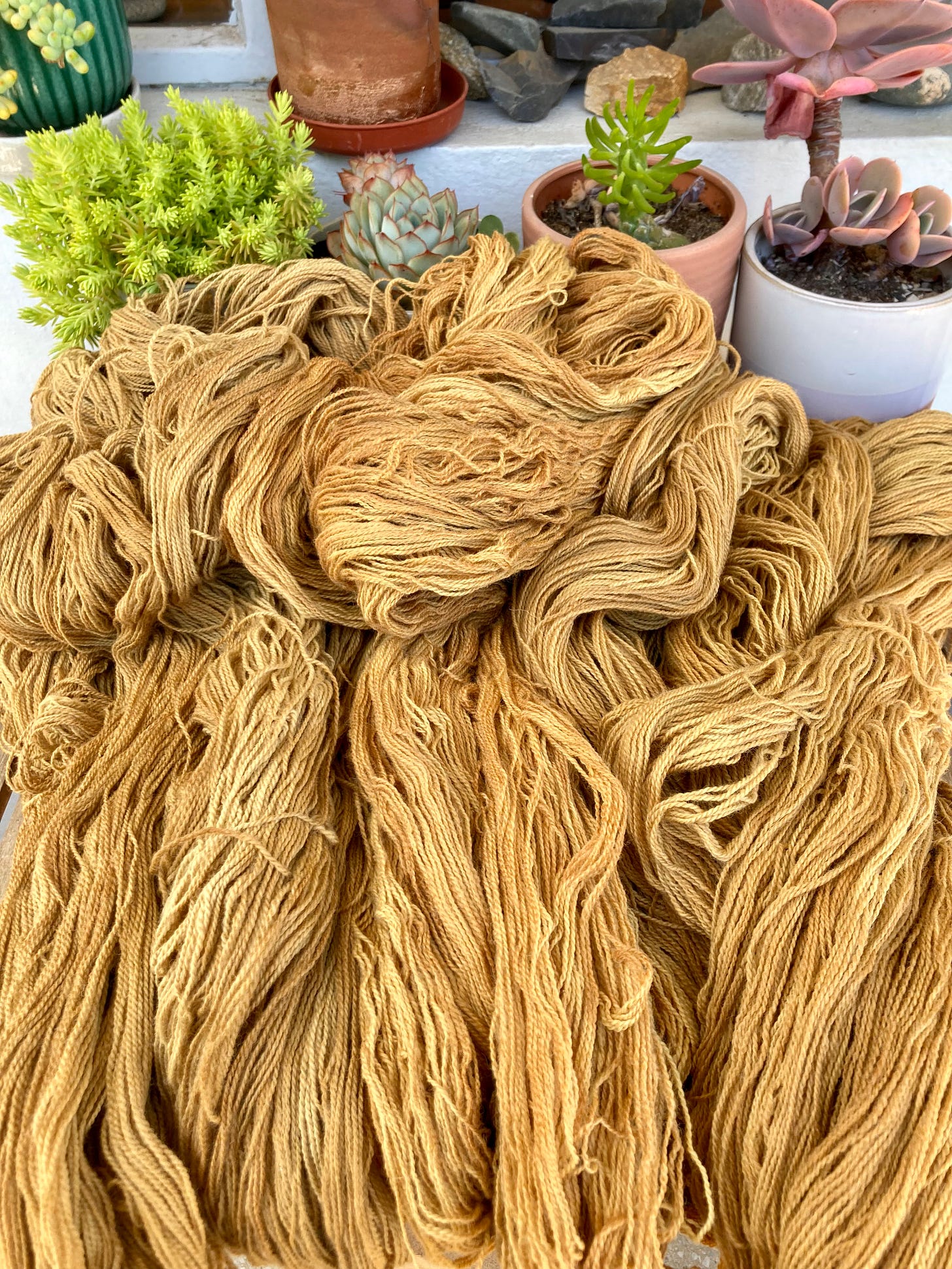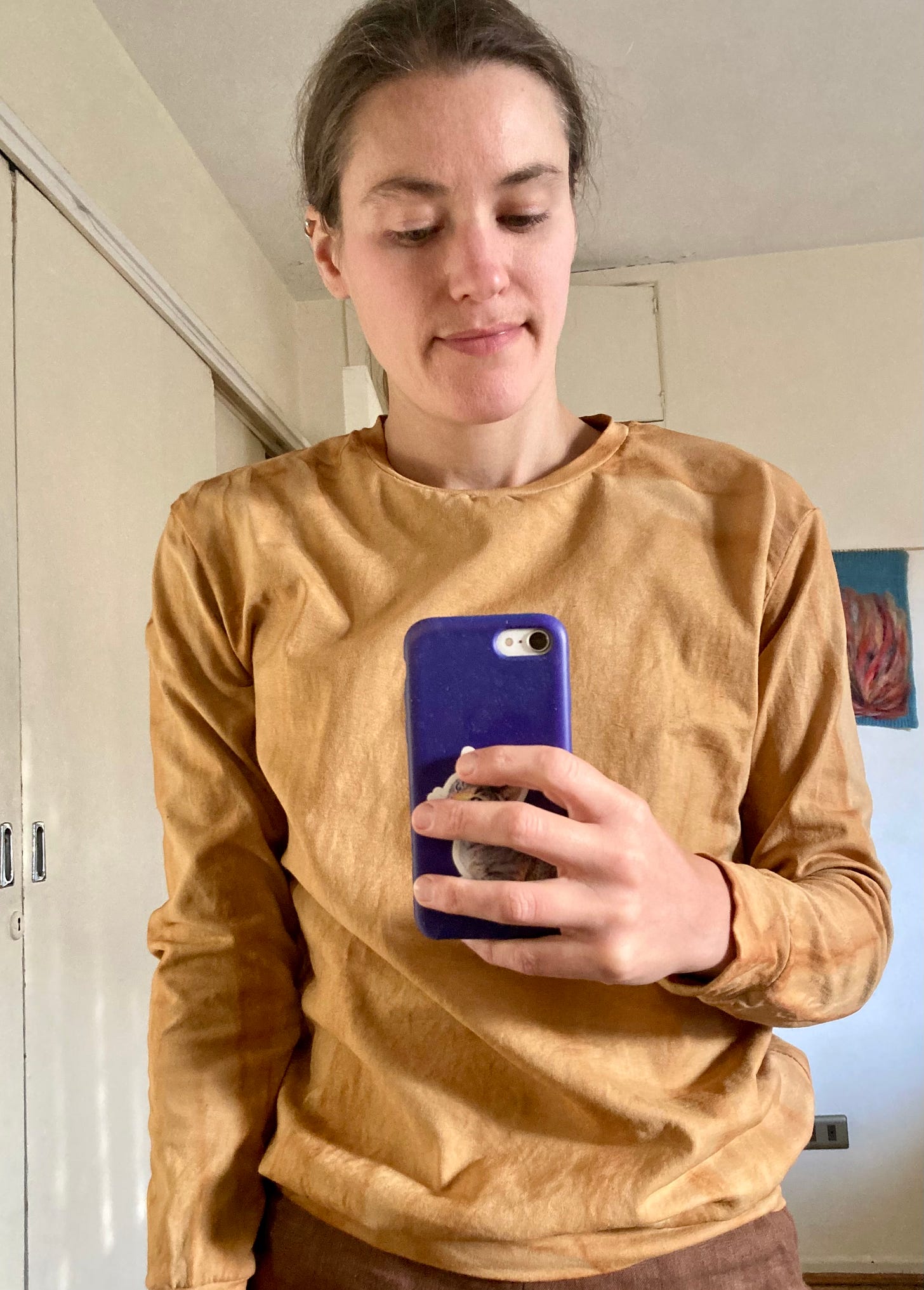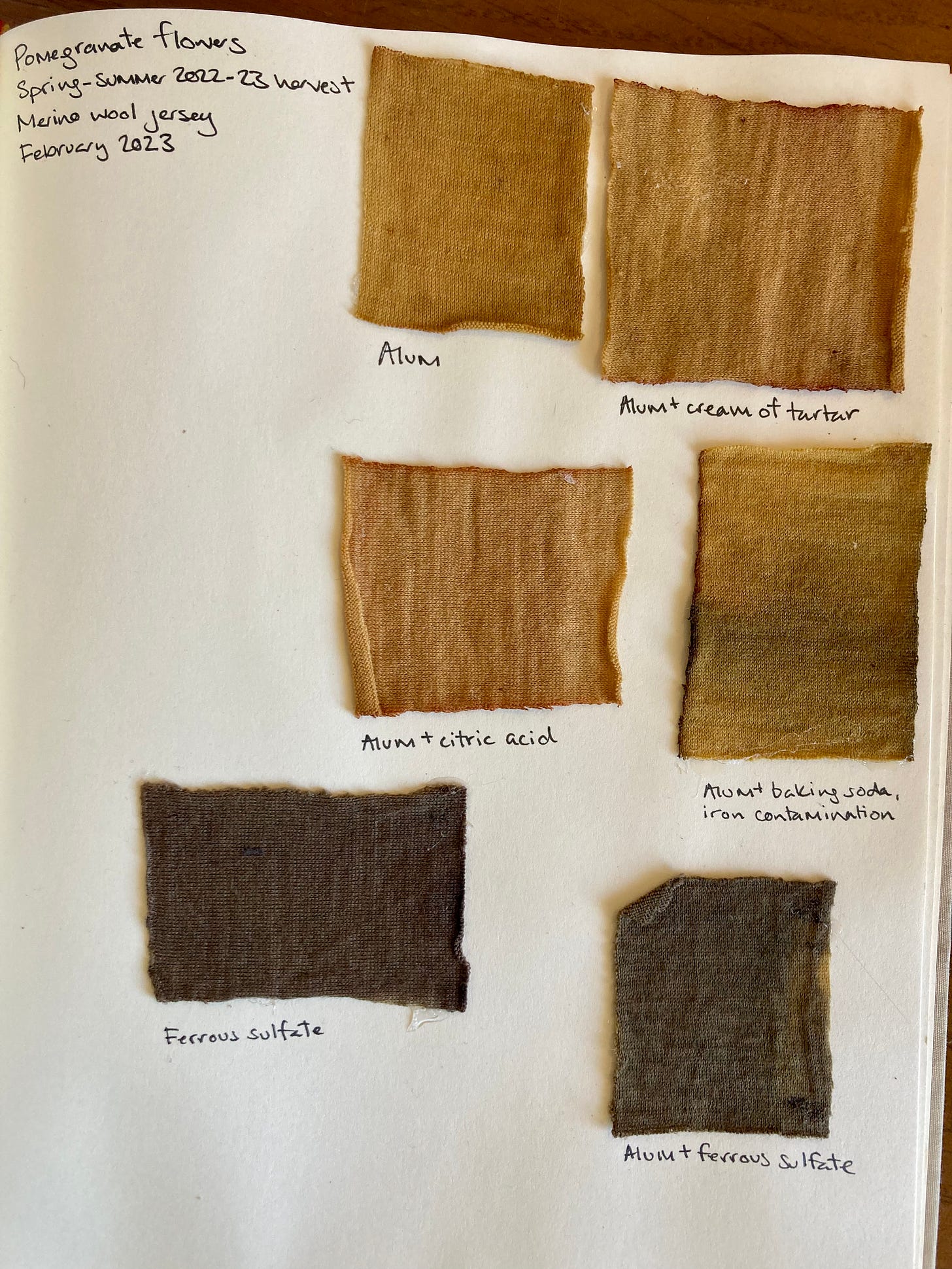Foraged pomegranate flowers, spring 2022
This newsletter has English and Spanish versions. To choose which language you receive, visit your settings on Substack, find this newsletter under Subscriptions, and select the language(s) you want.
Leer en español aquí.
The dyes I have to wait all year for hold a special place in my heart. These are the plants that I forage seasonally, collecting them bit by bit while they’re season and finally using them after the season is over to make a color that is not only tied to place, but also rooted in time to the specific year I collected them.
Pomegranates are one of those seasonal plants. I buy the fruit and save the rinds in winter, another pomegranate season, but a few years ago I noticed a pomegranate tree in my neighborhood. Being new to the Mediterranean climate, I had never seen a pomegranate growing on a tree before. I started to look for them on my walks around town, and slowly compiled a list of several places to find them. Then, last November, I noticed that the trees had exploded with flowers. Even better, these flowers fell right off the trees, especially on windy days. I guessed that these flowers would have the same or similar dye potential to the rinds so I started collecting them. This year, I was ready for the beginning of their flowering season. I started walking my pomegranate tree route in mid-October and picked up my first flowers on October 31.
After that, I walked the pomegranate route almost every day, looking for flowers that had fallen off the trees. There were so many flowers on the ground that I didn’t even need to consider picking flowers still on the trees. I collected a few fallen flowers from each tree each time I passed by.
The pomegranate flowers (or calyces) can be dried, but due to the high humidity and lack of space to spread them out in my apartment, I found that I wasn’t able to properly dry them before they started going bad. So I chose to freeze them in plastic bags instead. Around mid January, I noticed that the amount of flowers on the had decreased , and I already had a large collection by that time so I stopped collecting.
With such a large amount of material, I was able to include several projects in the dye process. I always try to exhaust a dye bath by reusing it several times, so I planned accordingly. I started with four skeins of Corriedale that I dyed with indigo last October with the intention of making green. At the time I didn’t have enough yellow dye material to dye all four skeins, so pomegranate season was the perfect time to continue this project.
When combining indigo with other dyes to make purple, green, or black, it’s best to dye the indigo first, then mordant, and then to dye other colors. I didn’t know this when I made my first indigo vat last summer, so at that time I dyed some skeins yellow with pomegranate rinds and then dipped them in indigo. Both ways are possible and will give different colors, but it’s better to dye the indigo first because the alkalinity of the indigo vat can damage mordant dyes, breaking the bonds between dye and fiber and releasing color. Dyeing indigo first (an alkaline environment) and then mordanting and dyeing with another dyestuff (a slightly acidic environment) has the additional advantage of neutralizing the wool, resulting in a more stable color (for more on the science of indigo dyeing, I recommend the book The Art and Science of Natural Dyes).

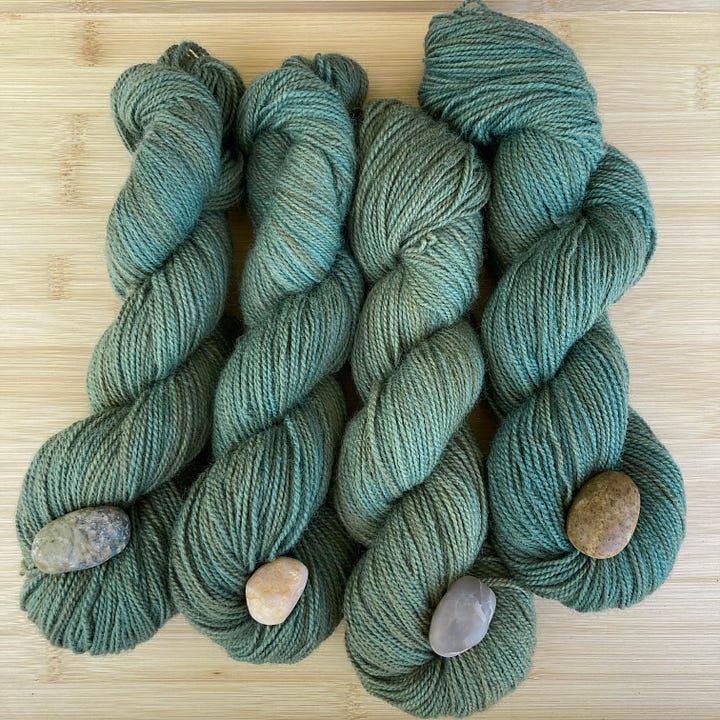
Next, I had some yellow-beige skeins from exhaust baths of other dyes that just weren’t particularly inspiring colors. My Merino collection was missing both stronger yellows and greens, so I thought using some of the pomegranate dye on them would improve these colors. In total, I overdyed 11 skeins.
I took four of those skeins and modified them with iron, and also overdyed some pink Corriedale skeins to make a clay pink.
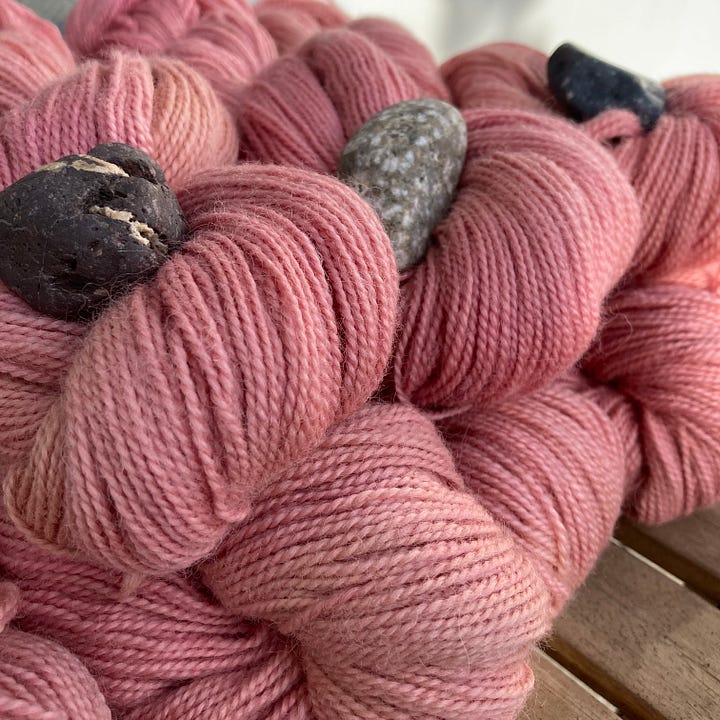
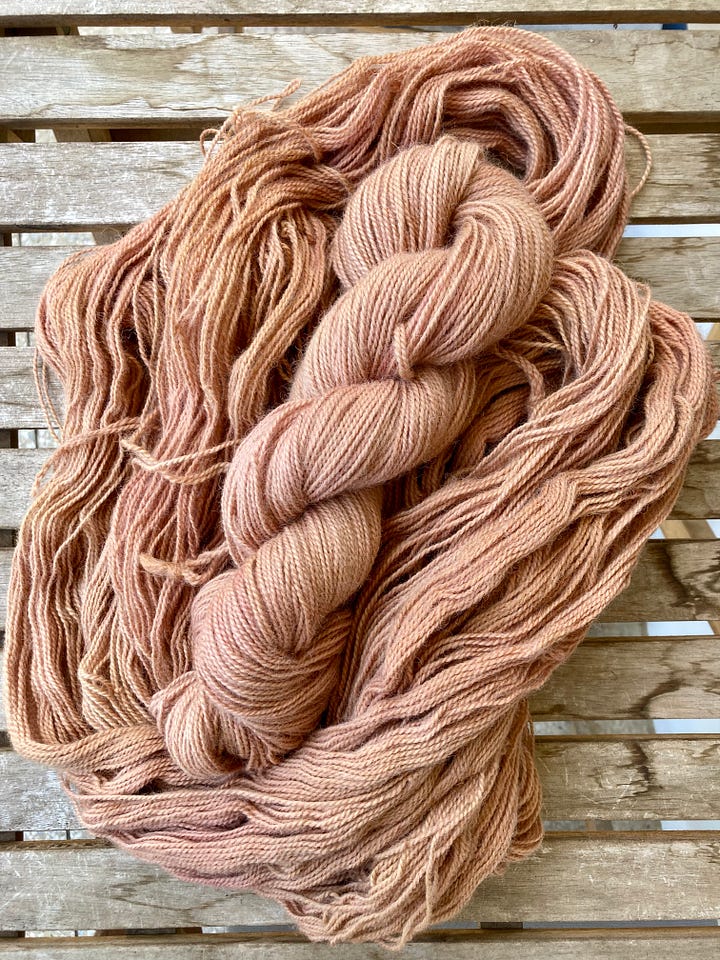
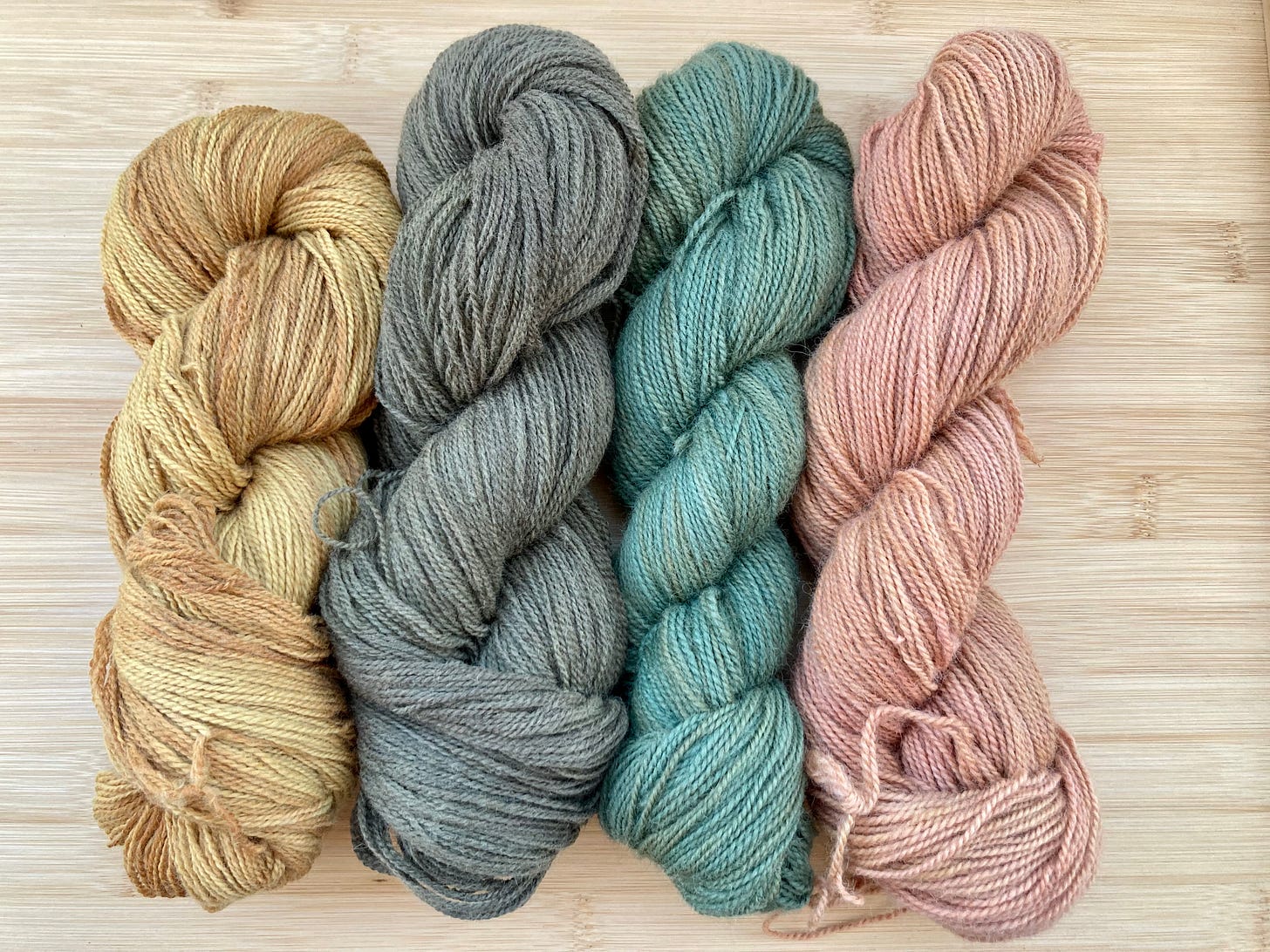
I also had an organic cotton long sleeve tshirt I sewed a few months ago, already mordanted with myrobalan and alum and waiting for me to decide what color I wanted to dye it. I added it to the dye along with some wool jersey swatches for my sample notebook.
Comparing this year’s pomegranate flower dye bath to last year’s pomegranate rinds, the flowers produced a browner shade, even oxidizing to a red-orange in some places, while the rinds gave a true golden yellow. Does this mean that the rinds and flowers contain different dye compounds, or is there some other variable at play? I don’t know the answer, but I’ll continue my investigation next year.
Thanks for reading! If you’d like to receive new posts in your inbox, you can subscribe here:
Lots of exciting news this month. First of all, my website is back up and accepting credit cards! Everything in the store is 15% off to celebrate. I can ship to all of Chile or coordinate pickup in Viña del Mar. Many thanks to my husband Jorge for helping me resolve the technical difficulties and integrate Webpay.
Expo Teje in Santiago is returning on April 22 and 23 and I’m excited to participate with the wonderful fiber community in Chile!
I’m coming back to Toledo in July for a month of natural dye adventures including workshops! If you’re interested in joining me to learn how to naturally dye yarn, reply to this email for more info.
I share updates and projects on Instagram, Pinterest, and the Making app.
Finally, if you enjoyed this post, please consider sharing it with someone else who might like it.

